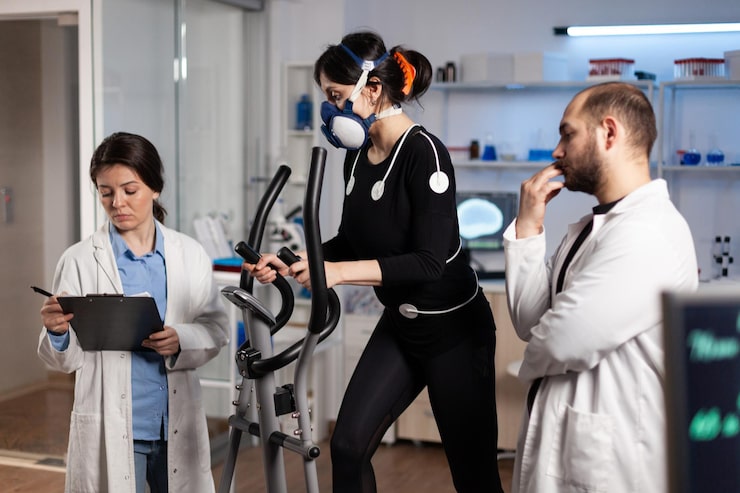An injured shoulder can turn a simple daily task into a painful challenge. Athletes, workers, and weekend fitness enthusiasts often find themselves sidelined by a rotator cuff tear without warning. A sports medicine doctor responds with quick strategies that control damage early and protect long-term recovery.
Immobilize the Shoulder with a Sling or Brace to Reduce Motion and Stress
The first priority after a suspected rotator cuff injury is limiting movement. A sling or brace keeps the arm stable and prevents further tearing of delicate muscle fibers. By holding the shoulder joint in a supported position, the body can begin its natural healing process without additional stress from sudden motions or accidental use. Patients often notice immediate relief once motion is restricted because the joint no longer shifts unpredictably.
A sports medicine doctor near me uses immobilization not as a cure, but as a protective step to avoid worsening the injury before full evaluation. Immobilization also prepares the shoulder for upcoming treatments such as physical therapy or potential surgery. Without this step, small tears can quickly become larger, more complicated injuries. Immobilization ensures stability while giving the physician time to create a treatment plan specific to the tear.
Apply Ice Packs to Reduce Swelling and Acute Inflammation
Cold therapy remains one of the simplest yet most effective emergency responses. Ice packs applied within the first 24 to 48 hours help minimize inflammation and slow down blood flow to the injured tissues. This reduces pressure inside the shoulder joint, easing pain while preventing swelling from escalating.
A sports medicine doctor recommends short intervals of icing, usually 15 to 20 minutes at a time, to avoid skin irritation. Athletes familiar with orthopedic sports medicine often keep cold packs available for this reason, knowing that rapid cooling plays a major role in controlling early-stage injuries. By consistently reducing swelling, the shoulder becomes easier to examine and treat in the following days.
Prescribe Anti-Inflammatory Medication to Control Pain and Swelling
Medication often follows closely after initial physical care. Nonsteroidal anti-inflammatory drugs (NSAIDs) are commonly prescribed to control both pain and inflammation in the rotator cuff. This step helps patients manage discomfort while also limiting the chemical reactions in the body that fuel swelling.
A sports medicine doctor near me may adjust dosage based on the patient’s age, medical history, and the severity of the injury. These medications allow patients to rest comfortably and avoid unnecessary strain. In orthopedic sports medicine, controlling pain early prevents muscle guarding, where the body instinctively tenses up and further restricts mobility. By reducing inflammation, doctors can better assess the injury and plan the next phase of treatment.
Perform Gentle Range-of-motion Tests (Passive) to Assess the Degree of Tear
After stabilizing pain and swelling, doctors often perform passive range-of-motion tests. This means the physician moves the arm gently without the patient’s active effort. These movements provide valuable information about the severity and location of the tear, helping to distinguish between partial and complete ruptures.
A sports medicine doctor uses these controlled motions to identify pain points and limitations. These tests are not intended to strengthen the shoulder but rather to guide further evaluation such as imaging. They help doctors decide if the injury can be managed conservatively or if it requires surgical consultation. Patients often find these exams informative because they reveal exactly which motions aggravate the injured rotator cuff.
Ask Patient to Avoid Overhead or Lifting Motions That Aggravate Symptoms
Daily habits can easily undo early progress in healing. Reaching overhead or lifting heavy objects places enormous strain on the rotator cuff. Even a lightweight grocery bag or a quick stretch above the head can worsen a tear significantly.
A sports medicine doctor near me advises patients to be conscious of posture and arm use throughout the day. These restrictions may feel inconvenient, but they are temporary measures designed to prevent setbacks. In orthopedic sports medicine, controlled rest plays as vital a role as active rehabilitation. Avoiding aggravating movements ensures the shoulder remains in a protected state, ready for gradual reintroduction of safe activity when cleared.
Use Compression Wrap or Support to Limit Fluid Buildup or Swelling
Compression helps manage swelling by limiting the accumulation of fluid around the shoulder joint. A supportive wrap keeps tissues snug, reducing discomfort and speeding up the healing environment. When combined with immobilization, compression prevents the joint from becoming stiff and inflamed.
A sports medicine doctor applies compression strategically, ensuring circulation is not cut off while maintaining steady pressure. Patients benefit from reduced stiffness and improved comfort, particularly during the first several days post-injury. This method is common in orthopedic sports medicine care because it addresses swelling without adding new strain on the injured shoulder.
Schedule Imaging (MRI or Ultrasound) to Confirm Tear Size and Location
Physical exams provide clues, but imaging reveals the full picture. MRI or ultrasound scans allow doctors to see the extent of the rotator cuff tear, the specific tendon involved, and whether surgery might be required. These scans also detect related injuries such as bone spurs or labrum damage.
A sports medicine doctor near me orders imaging to ensure treatment plans are based on precise information rather than guesswork. The scans act as a roadmap, showing both the doctor and patient the true condition of the shoulder. In orthopedic sports medicine, imaging provides clarity that guides recovery timelines, whether through conservative therapy or surgical repair.
Begin Gentle Isometric Exercises Once Pain Allows to Prevent Atrophy
Muscle atrophy becomes a risk if the shoulder remains inactive too long. Once pain levels decrease, doctors often introduce isometric exercises—movements that contract the muscle without moving the joint. These exercises keep the rotator cuff engaged while avoiding additional stress.
A sports medicine doctor designs specific routines to fit each patient’s injury. These controlled exercises help preserve muscle strength, improve circulation, and prepare the shoulder for more advanced rehabilitation. In orthopedic sports medicine, maintaining muscle health during rest is considered as important as treating the injury itself. Patients who begin isometrics under guidance often experience smoother recoveries and reduced risk of long-term weakness.



